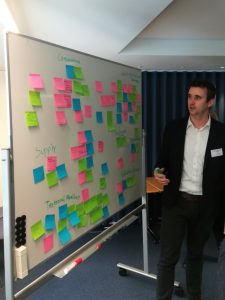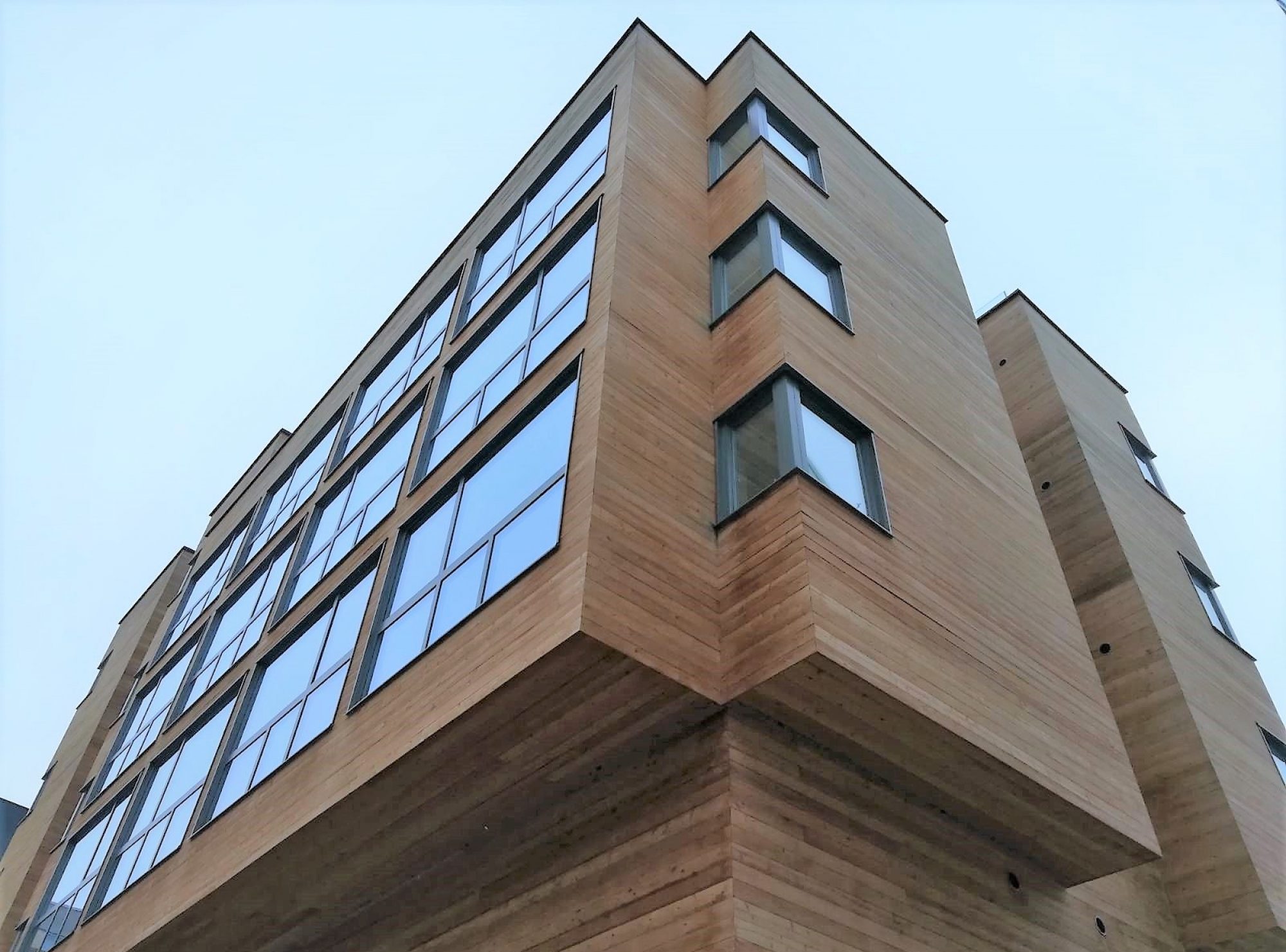
I had a chance to participate in the Nordic workshop on Wood in Construction in Stockholm, earlier this month. The event was a third meeting in a project that seeks to pave the way for increased use of wood in the building sector in the Nordics, coordinated by the EIT Climate-KIC Nordic. The organisation is hosting the Nordic Secratariat for Wood in Construction, since the beginning of this year, with funding from the Swedish Government and the Nordic Council of Ministers.
The Nordic project and the secretariat aims to produce a road map for how to address challenges and barriers to increased industrial use of wood in construction. The roadmap will be submitted to the Nordic Council of Ministers in June. The underlying idea of the project is to help the Nordic countries achieve the goals set forward in the Agenda 2030, especially those linked to sustainable cities as well as sustainable production and consumption. The five- hour-workshop in central Stockholm offered a good opportunity to exchange views and learn from a diverse set of stakeholders active in this field, especially in Sweden.
The workshop format was very participatory, which was a positive thing in the sense that it created a lot of interaction and discussion. The participants were mostly from Sweden and a few from Helsinki, with the majority representing research and business sectors. We were first asked to identify diverse trends that play a role in how much wood is used in buildings and construction, for instance related to urbanization and higher density of population, role of sustainability values among consumers/policies and technological advancement. In terms of identifying the barriers of increased use of wood in construction, and the best strategies to overcome them, the participants also came up with various suggestions and food for thoughts. Among those that were ranked as important to work on further, were economic valuation (e.g. identifying the added value of wood to end-users), research and education (including collaboration with companies), as well as knowledge and experience sharing among the business and other actors.
A key observation from the workshop is that there seems to be a need to study and compare further the policies, strategies and other interventions used so far in promoting the use of wood in the Nordic contexts, and the gaps in them. Moreover, mapping and comparing the outcomes of these measures, and the dynamics involved, would help to make well-informed decisions on the future strategies.
The next step in this collaborative process will be to conduct interviews among the stakeholders in the Nordic countries, and to organize another workshop in Helsinki, tentatively in early May. We learnt that the secretariat seeks to engage more stakeholders in the next workshop, and to discuss with policy makers further the policy barriers. It will be interesting to see the final recommendations from the process, and especially how they will be adopted by the Council of Ministers in the meeting, which is scheduled for June, in Helsinki.
By Heini Vihemäki (project researcher)
